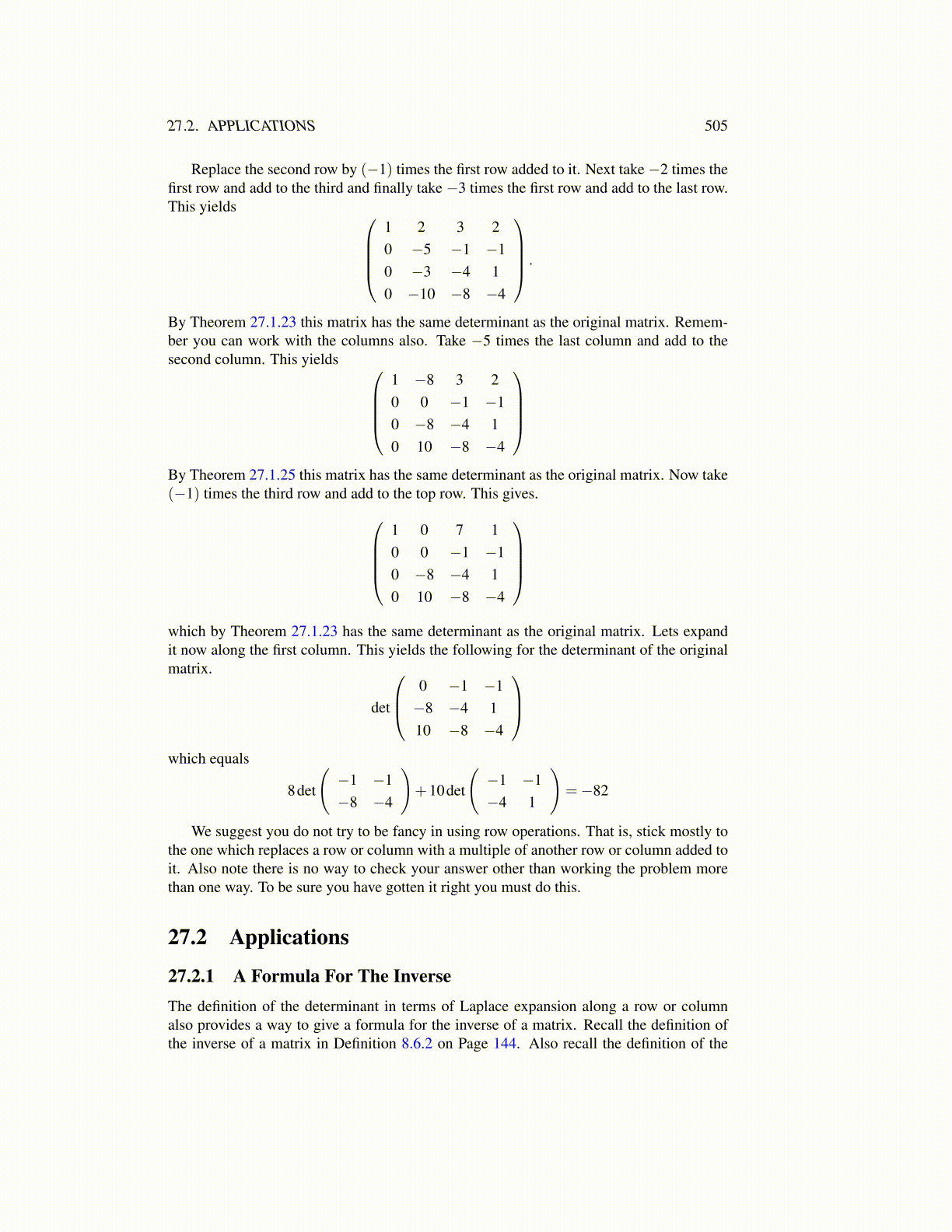
27.2. APPLICATIONS 505
Replace the second row by (−1) times the first row added to it. Next take −2 times thefirst row and add to the third and finally take −3 times the first row and add to the last row.This yields
1 2 3 20 −5 −1 −10 −3 −4 10 −10 −8 −4
.
By Theorem 27.1.23 this matrix has the same determinant as the original matrix. Remem-ber you can work with the columns also. Take −5 times the last column and add to thesecond column. This yields
1 −8 3 20 0 −1 −10 −8 −4 10 10 −8 −4
By Theorem 27.1.25 this matrix has the same determinant as the original matrix. Now take(−1) times the third row and add to the top row. This gives.
1 0 7 10 0 −1 −10 −8 −4 10 10 −8 −4
which by Theorem 27.1.23 has the same determinant as the original matrix. Lets expandit now along the first column. This yields the following for the determinant of the originalmatrix.
det
0 −1 −1−8 −4 110 −8 −4
which equals
8det
(−1 −1−8 −4
)+10det
(−1 −1−4 1
)=−82
We suggest you do not try to be fancy in using row operations. That is, stick mostly tothe one which replaces a row or column with a multiple of another row or column added toit. Also note there is no way to check your answer other than working the problem morethan one way. To be sure you have gotten it right you must do this.
27.2 Applications
27.2.1 A Formula For The InverseThe definition of the determinant in terms of Laplace expansion along a row or columnalso provides a way to give a formula for the inverse of a matrix. Recall the definition ofthe inverse of a matrix in Definition 8.6.2 on Page 144. Also recall the definition of the